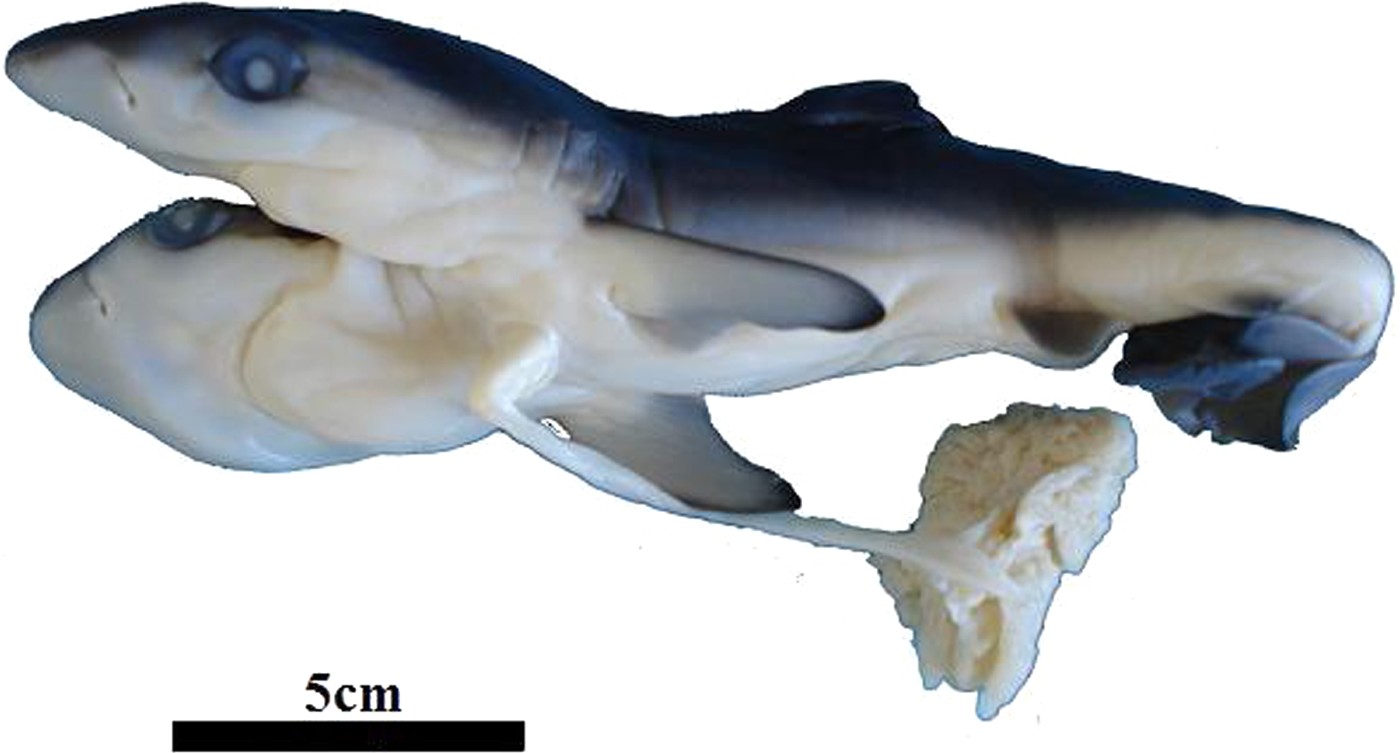The Shark with Two Heads
When not studying sharks I make my living as a developmental biologist, studying the processes that control embryonic development in mammals. There are few things developmental biologists like better than a good mutant, and much of what we know about normal development has come from studying abnormal development. Unlike terrestrial species, mutant marine animals are seldom seen. Why? They certainly occur, but likely have reduced survival and die or are predated very quickly. When sharks die they simply sink to the bottom.
Galvan-Magana Figure 2
The mutations occasionally found in sharks range from defects in pigment (albinism) to an abnormal curling of the body. Recently two fascinating mutants have come to light in blue sharks (Prionace glauca). A paper by Galvan-Magana et al describes two mutant embryos from two different pregnant female blue sharks; both embryos had the same specific morphological defect - bicephaly, or two heads!
Bicephaly is a type of abnormal twinning, similar to what is called conjoined (used to be “Siamese”) twins in humans. Most commonly, conjoined twins occur when a single embryo begins to split into two, the same process that happens to give normal identical twins. Complete twinning can only occur very early in development however; if the split begins too late the embryos cannot completely separate, and conjoined twins result. It may also happen when two normal embryos are pressed very tightly together, such that they begin to fuse.
Blue sharks have a very interesting mode of development called placental viviparity, where the female nourishes the embryo through an umbilical cord attached to a placenta - not unlike the way mammals develop - and the offspring are born live. Most placental viviparous shark species have small litters of only a few offspring, but blue sharks usually have very large litters. Normal blue shark litters can have pup numbers in the dozens, and the largest ever recorded was a single female carrying 135 pups! Only the whale shark carries more pups per litter.
This large number of blue shark pups can make for crowded conditions in the uterus of the female, and the authors speculate that that the unusual malformations found in these litters may result from the very close proximity in which the embryos develop - an embryo that starts twinning may be too crowded to separate completely.
The full manuscript is: Felipe Galván-Magaña, Ofelia Escobar-Sánchez and Maribel Carrera-Fernández. (2011) Embryonic bicephaly in the blue shark, Prionace glauca, from the Mexican Pacific Ocean. Marine Biodiversity Records, 4: e1.
It can be found here: http://journals.cambridge.org/action/displayAbstract?fromPage=online&aid=7975280
(Photo from Galvan-Magana et al.)

